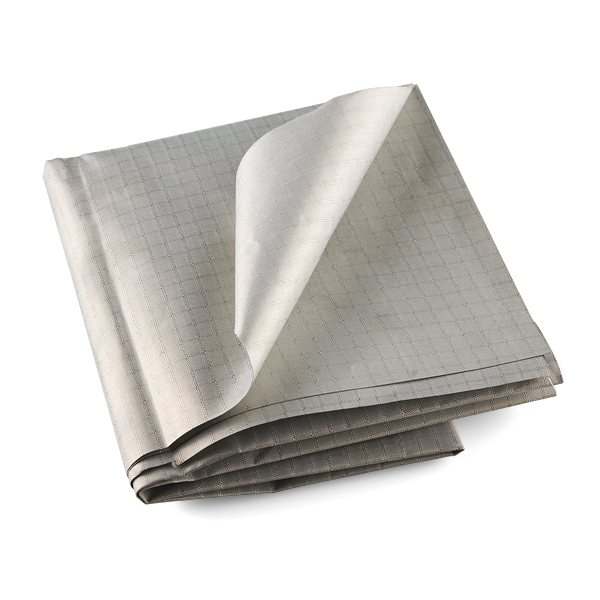Conductive Fabric - 12"x13" Ripstop
This is a conductive knit fabric for use in e-textiles. It is similar in feel to a nylon ripstop material. It is highly conductive with a surface resistivity of < 0.02 ohm/sq. This is a great add-on to any LilyPad project.
If you aren't sure what to do with conductive fabrics, you have to check out the Wearable Toy Piano, as well as some of the other cool Instructables.
- It's conductive!
- Easily sew electronic features into your next project
- Great for use with the LilyPad
- 12 x 13" (304.8 x 330.2 mm)
Conductive Fabric - 12"x13" Ripstop Product Help and Resources
Comments
Looking for answers to technical questions?
We welcome your comments and suggestions below. However, if you are looking for solutions to technical questions please see our Technical Assistance page.
Customer Reviews
4.5 out of 5
Based on 4 ratings:
I confirmed it, it works for touch screens
I got this fabric so I can modify my snowboard gloves and make them touch screen friendly. The 12x13 piece might be too big for this purpose, so I will have to start modifying friend's gloves as well.
One of the things that I like to do is to check it's specifications, so - I measure the resistance and it is very low. Basically you don't need to care about it. - The texture is soft enough to think that it will not damage the plastic screen. Time will tell. - So far the "ripstop" is confirmed... but I think I will need to wait one season to be sure.
As a metal base conductive fabric, it also conducts temperature. This means that inside the gloves it feels a bit colder where I have contact with skin.
I'm still experimenting and testing different options in different fingers on my old gloves before modifying the good ones...
Used this to make a capacitive touch button for a piece of artwork. The readings were a bit erratic, especially in a room with a lot of people in it, but otherwise it worked really well in a smaller environment.
More durable than expected
I used the fabric to make conductive bean bags for a cornhole-like game. I ended up backing the conductive fabric with some cotton twill. So far the bags have lasted through a couple days of heavy use and they're still going strong.




Any idea if the full body scanners (X-ray backscatter and millimeter wave) can see through this? :)
These are used to make camping materials as they are water proof.Parachutes, kites, flags, hot air balloons, parasail wings and also sports clothes are made from this material.This material which won’t fail in the highest stress situations. Ripstop Fabric
Has anyone tried attaching this to other fabrics (like a sweatshirt) by ironing it on using fusible webbing? I've been sewing patches of it onto a shirt for a project and am wondering if I could just attach it with fusible webbing between the shirt and the conductive patch. It doesn't seem that an adhesive layer between the fabric and the conductive patch would be a problem, but I hate to waste any if someone already knows it won't work. I guess my question is...would an adhesive webbing interfere with the conductivity? Thanks for any advice.
Hi, I can confirm that this fabric works perfectly for capacitive touchscreen projects. I used it to make my winter gloves tablet-friendly, using a modification of the method here: http://www.instructables.com/id/Making-A-Glove-Work-With-A-Touch-Screen/
I used small circles of this conductive fabric attached to the conductive thread on the fingertips, so that I could have a decent touch area without poking more holes in my gloves.
Greetings
Has anyone tried to use this for a capacitive screen (like the iPad) stylus? I've seen some discussions about it and the iFaraday styli use conductive fabric.
Thanks
I don't know wrt this one in particular. But this one..
http://www.sparkfun.com/products/10055 - Conductive Fabric - 12"x13" MedTex180
..has been. See: http://www.etsy.com/shop/shapedad
What about raw yards? As years of carbon-fiber/kevlar composite work has taught me, you need larger amounts for larger projects or mistakes.<br />
<br />
So how's about a per yard sale strategy. <br />
That is how most textiles are sold anyways.
Que?
No clue. Try it out and let us know :-)